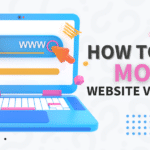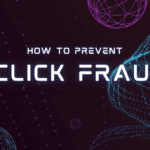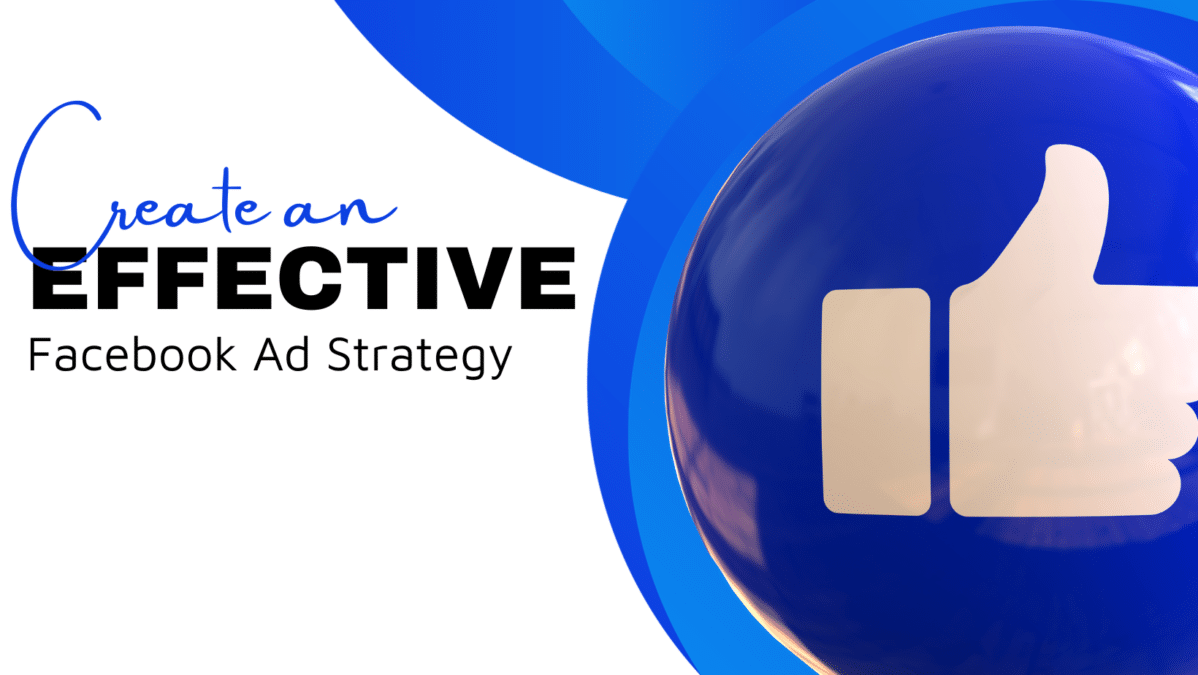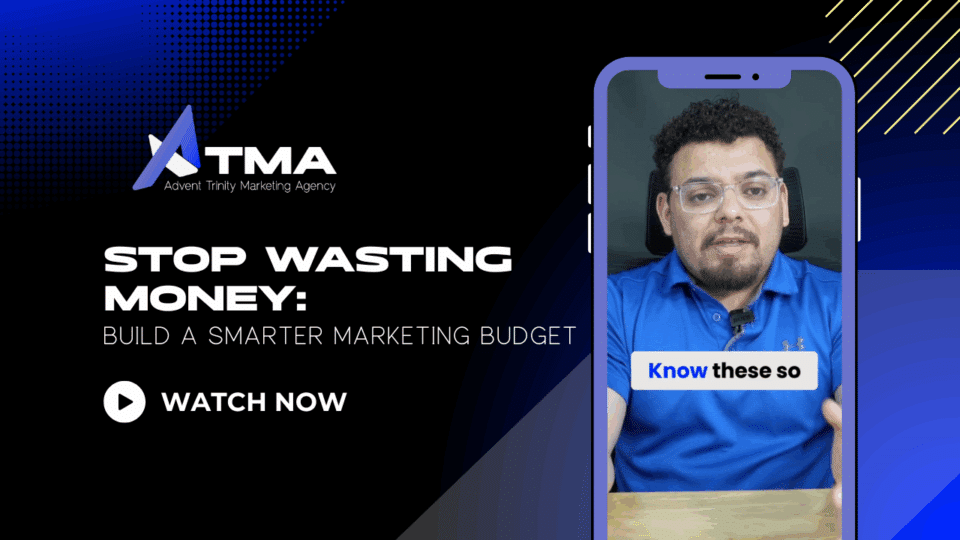
How Many Visitors Should Your Website Get? How to Get More
May 16, 2022
How to Prevent Click Fraud
May 31, 2022How to Create An Effective Facebook Ad Strategy
Explore various advertising tactics on Facebook by taking a closer look at different ad strategies and identifying which ones work best for your business goals
When it comes to advertising, you may be unclear about how to get the most bang for your buck. After all, there are several advertising and marketing solutions available. The marketing team at Advent Trinity Marketing Agency will most likely direct you to run ads on Facebook. It’s affordable, and you get the best ROI. With approximately 3.05 billion people using this social media platform each day, you’re bound to reach the audience you’re looking for.
Facebook Ads
There are more than 10 million businesses (up from only 3 million in 2022!) actively advertising on Facebook.
That’s a big number – don’t freak out.
There are so many advertisers on Facebook because it works. It’s an excellent way to reach your desired audience and inspire them to take action (ideally, purchasing your product/service).
What you must know is that not all of those 10 million advertisers are successful. Many have failed to understand who their ideal customer is and how to target the people they want to sell to. This is where doing your research and developing a strategy come into play.
What to Know Before you Set Up your Facebook Ad
Our partners at HubSpot have offered some pre-planning tips to help make your campaign successful.
Understand Your Customer
First, you need to understand who your customer is.
- Who are they?
- What does their family situation look like?
- How much do they make?
- Where do they live? (Both geographically and whether or not they own or rent).
- Where do they work?
- How do they spend their free time?
Understand How Your Customer Thinks
Once you understand who they are, you’ll want to take it one step further and understand how they think.
What keeps them up at night? How is their emotional state, and what needs are they looking to have fulfilled? How do they identify themselves? The way they see themselves is often more important than how you see them (even if your view is more realistic).
The Customer Journey
Next, you’ll want to walk through the average customer journey. What steps do they take as they:
- Recognize that they have a problem
- Identify what that problem is
- Discover potential solutions
- Become aware of yourself as an option
- Choose to purchase your product
For each customer, this journey may be slightly different. However, they generally fall into 3 categories:
- Awareness Phase (top of the funnel)
- Consideration Phase (middle of the funnel)
- Decision Phase (bottom of the funnel)
Why does this matter to you as an advertiser? Because you will tweak your content, offers, verbiage, and Call to Action based on whatever stage of the customer journey your potential buyer is in.
Segment Your Audience
Finally, you’ll want to break your audience up into segments based on where they are situated in the customer journey. This will allow you to make the right offers to the right people at the right time.
Here are a few examples of potential audience segments:
Any new customers in the “prospects stage” are entering your funnel as warm leads because they are interested in your product.
Lukewarm leads visited your website but didn’t engage, you may wish to use Retargeting to remind them that you are there, waiting in the wings, with the solution to their problems.
Engaged blog readers like your blog and keep coming back for more. They’re more likely to share your content on Facebook or make a purchase.
Landing Page visitors came to a specific landing page and are, therefore, probably interested in that particular product.
Shopping cart abandoners were so close to making a purchase… but something stopped them. They may just need a gentle push to finish their purchase.
Return customers love your brand. They’ve already purchased from you in the past and come back time and time again for more. These customers can serve as brand advocates, singing your praises and recommending your product to their friends.
As you learn more about your own audience, you may uncover different segments that will require different messaging.
Varying Your Facebook Ad Strategy
Now, consider how your Facebook strategy will differ based on who you are advertising to and where they are in their journey (and in your funnel). Consider these possibilities.
When you are looking to attract prospects, you may create ads around your brand or content that will help them understand their problem (and position you as an expert).
As your goal shifts and you want to CONVERT the prospects, you will utilize contests and giveaways, free trial offers, and lead ads.
When it’s time to CLOSE the prospects, you’ll incorporate lead nurturing campaigns, discount offers, sales campaigns, and limited-time offers to encourage them to buy.
Once prospects become customers, it’s time to DELIGHT them with premium offers, referral programs, upsell campaigns, and helpful information about their purchases.
There’s one more step before we dive into Facebook Ad Strategy. It’s called a Facebook pixel and if you want to track your conversion (which you definitely do), you need to install it. The Facebook pixel is a string of tracking dots that you take from Facebook and embed in your website. It then tracks what visitors do when they get to your site. This allows you to better hone your advertisements based on actual user behavior.
Facebook Advertising Strategies
Now that you’ve set up the foundation for strong Facebook Ads, we can take a look at different strategies you might employ with your advertising.
Depending on what audience segments you choose to target, these may not all fit the bill. Make sure to keep all of the audience research you did in mind as you look through these options.
Combine Facebook Ads with Content Marketing
Many companies make the mistake of targeting warm leads with ads designed to turn them into paying customers. You know better. You know that a warm lead is not ready to buy from you yet. Instead of turning them off with straight sales offers, provide them with useful content that answers their questions and solves their pain points. This needs to be short, interesting, and valuable. Be patient. Eventually, you will convert these warm leads into customers.
How do you do this?
- Create content.
- Share content on Facebook.
- Ask your team members (and maybe a handful of friends) to like and share the post.
- Boost your Facebook post so you can reach a wider audience.
Use Giveaways and Contests
Facebook contests needn’t focus on sales all the time. You can instead offer a potential high-value prize to create increased brand awareness that will pay off in the long run by bringing new leads into your conversion funnel. Before committing to a contest or giveaway strategy, review Facebook’s policies to ensure you aren’t violating any of their rules.
Use Lead Ads to Build Up Your Marketing List
A large Facebook following is great, however, Facebook “owns” your contacts. If they decide to change their algorithm or shut down, you will lose access to those people.
Creating a lead magnet, such as a free e-book or course, and then running a lead ad will help you build your marketing list. Consumers can enter their email addresses directly into Facebook (no added steps or friction during which you may lose them) in exchange for their free gift. You can then add their email to your marketing list and include them in your email marketing campaigns moving forward.
Incorporate Video Ads
If you’ve been running ads for a while and aren’t seeing the returns you’d hoped for, or you’re brand new to Facebook ads and want to try a few different options and see what works best for your situation, video ads may be just what you’re looking for.
Not only do people love videos, but they also have the lowest effective cost per click (eCPC) compared to other ad types. Need to sweeten the deal even more? Adobe found that “shoppers who view video are 1.81 times more likely to purchase than non-video viewers.”
Create Facebook and Google Ads
While many marketers see these platforms as one or the other, Facebook and Google can actually complement each other quite nicely.
Once again, your strategy must depend on your campaign goals and the audience segment you’d like to target. For example, someone searching for a specific product, say a new computer, is likely ready to make a purchase and is simply researching their options. Using the right keywords and creating Google ads around them may be better than targeting warm leads on Facebook with increased brand awareness.
Utilize Facebook Mobile Ads
Before we go any further, is your website or landing page optimized for mobile viewing? This means that users will have a positive viewing experience no matter what device they use. If your site is not set up for this, you aren’t ready for mobile ads. Despite the fact that 94% of Facebook’s advertising revenues were generated via mobile, you will be throwing money out the proverbial window if you send potential customers to a site that causes them frustration.
Master Your Facebook Ad Strategy
To create a successful Facebook ad campaign, it’s crucial to understand your target audience and create a buyer persona that accurately reflects the characteristics of your ideal customer. By analyzing Facebook user behavior and preferences, you can tailor your ads to reach the right people at the right time.
To effectively create a customer journey, consider where your potential customers are in their buying process and what information they need to move them closer to a purchase decision. By addressing their needs and pain points through your ads, you can guide them toward your product.
While Facebook’s platform may evolve, the importance of understanding your customers and their journey will remain a vital factor in the success of your ad campaigns.
ATMA can help you develop a successful Facebook advertising campaign!
By Leslie Radford
**Update November 2023




